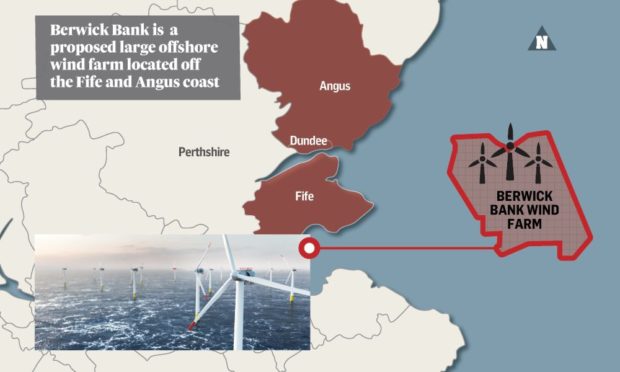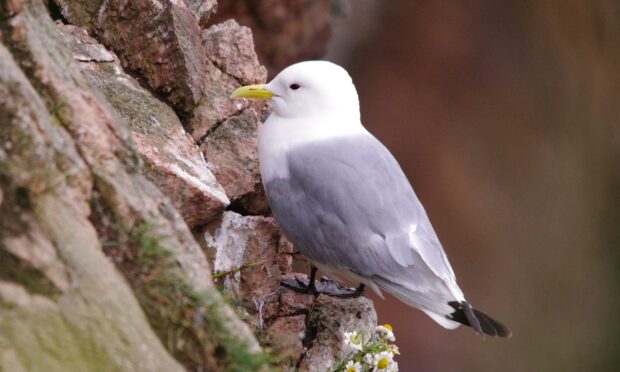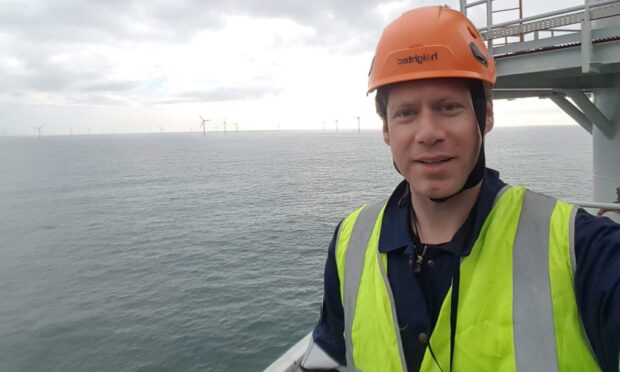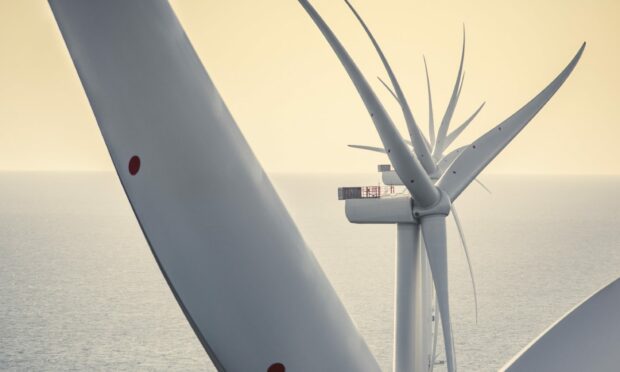A wind farm that was set to cover the same area as Fife will be cut back due to concerns over seabirds in the North Sea.
SSE Renewables will reduce the size of Berwick Bank wind farm by around 10% to mitigate the impact on the local seabird population.
The energy giants had planned to build Berwick Bank Wind Farm in a vast area measuring 1,314 square kilometres.
That will be cut to around 1,182 sq km.
While the number of turbines is still unknown, SSE is planning to increase the minimum height of the turbine blades.
They will be raised from 22m to 37m above sea level. The length of the turbine blades is to be determined.
Plans for the wind farm have been more than 10 years in development.
They bring together Berwick Bank and Marr Bank offshore wind farms, into one single project.
Together they would increase the country’s overall renewable energy capacity by nearly 30%.
The project will be capable of generating enough energy to power over five million homes, equivalent to all of Scotland’s households twice over.
In comparison, both the Seagreen and Inch Cape developments estimate an output of 1GW to 1.1GW.
A ‘significant positive impact’ on seabirds
Raising the height of the blades will allow seabirds to pass safely through the site.
It comes following the completion earlier this year of a 24-month aerial survey programme.
The survey, consisting of 300 hours of flight time, across 5,000 sq km, is believed to be the largest of its kind ever undertaken.
It was conducted by SSE Renewables and Hi Def Aerial Surveying.
Berwick Bank project director Alex Meredith said: “Accelerating our efforts to decarbonise the electricity system must be done in harmony with our natural environment.
“We have taken the decision to reduce the area we will develop by around 10% to provide large gaps between existing wind farms and the Berwick Bank wind farm site.”
That will, he said, prevent a barrier forming between seabird feeding grounds and breeding habitats.
Mr Meredith said increasing the height of the blades would have a “significant positive impact” on potential collisions.
HiDef commercial director Martin Scott said reducing the impact on the seabird population in the area was a key concern.
The changes to the project are set out in a scoping report, sent this week to Marine Scotland.
Mr Scott added: “Higher densities of birds fly closer to the sea surface.
“Creating a larger airgap increases the likelihood of birds being able to pass safely under the turbines.
“It reduces the potential for collision risk with the moving blades.”
What are the next steps for Berwick Bank?
The wind farm’s planning application is likely to go to the Scottish Government in spring 2022.
If given the go-ahead for construction, it could begin generating clean electricity in the second half of this decade.
It could help Scotland meet its net zero targets of generating up to 11GW new offshore wind by 2030.
SSE Renewables is a developer, owner and operator of renewable energy across the UK and Ireland.
It has a portfolio of around 4GW of onshore wind, offshore wind and hydro.
It is currently constructing the world’s largest offshore wind farm, the 3.6GW Dogger Bank wind farm in the North Sea.
SSE Renewables is currently working on the Seagreen wind farm, due to be complete in 2023.



